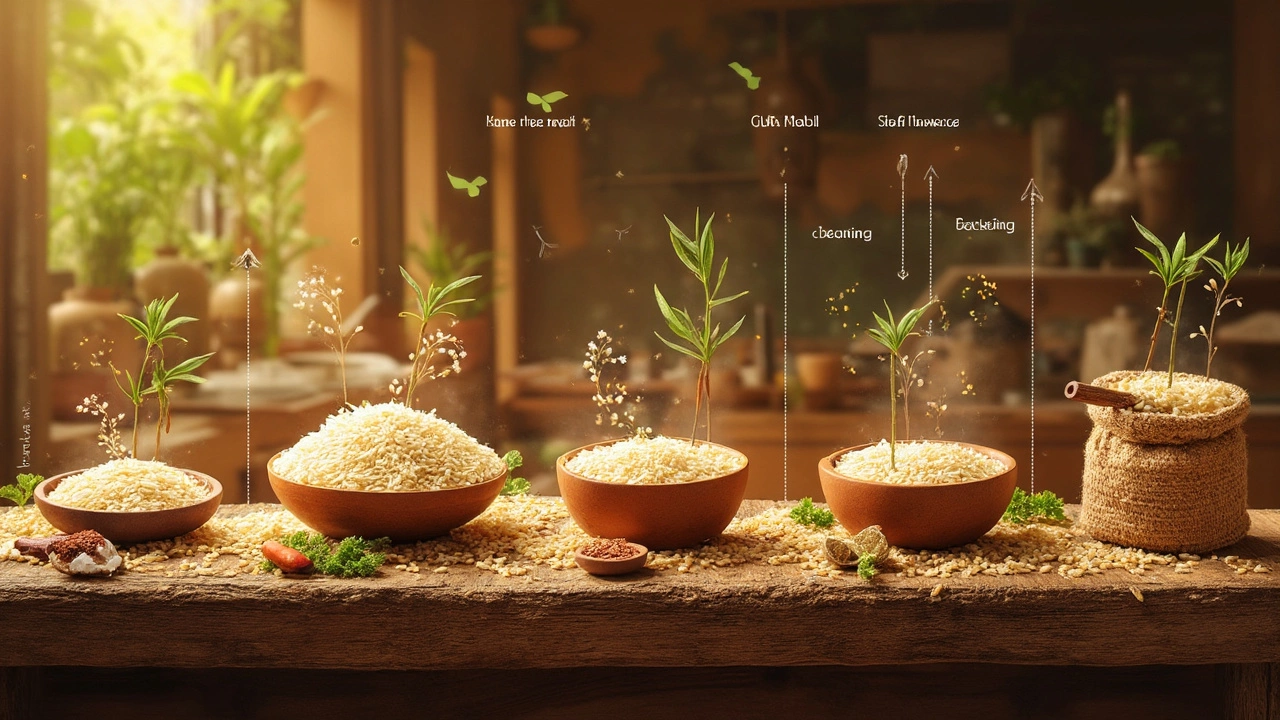Ever wondered how your favorite snacks go from raw ingredients to the tasty treats on your table? The magic lies in food processing operations, a series of steps that transform and preserve food. It's more than chopping and mixing; it involves ingenious techniques that keep food tasty and safe.
Let's kick things off with primary processing techniques. This is where the journey begins, with cleaning, sorting, and grading raw materials. Think of it as prepping ingredients before cooking.
Once sorted, preservation methods come into play. From canning to freezing, these techniques help extend food's shelf life, ensuring you enjoy fresh flavors year-round.
On the techy side, advanced processing includes wonders like freeze-drying or high-pressure processing, ensuring food remains nutritious and safe while sometimes even enhancing its taste.
Stay curious as we explore these fascinating processes. They're not just about convenience but about making sure you enjoy safe, delicious meals every day!
- Introduction to Food Processing
- Primary Processing Techniques
- Preservation Methods
- Advanced Processing Technology
- Future of Food Processing
Introduction to Food Processing
Food processing is all about transforming raw ingredients into something delicious and safe for us to enjoy. Imagine your favorite breakfast cereal—it didn't just magically appear like that. It went through food processing operations to get from grains to your bowl.
One of the first steps in food processing is preparing the raw materials. This involves cleaning and sorting. For instance, before wheat turns into flour, it goes through cleaning to remove dirt, stones, or any unwanted material. Sorting comes next, where only the best quality materials proceed to the next stage.
Operations in this field aren't just about preparation. They're about preserving the food, too. We don't want our food spoiling too soon, right? Preservation methods like canning, freezing, and drying are key players. Canning is like locking food in a time capsule, keeping it fresh for months or even years!
Why is Food Processing Important?
It's not just about taste and convenience. Food processing helps in increasing the safety of our food by eliminating harmful bacteria and improving nutritional value. Believe it or not, some vitamins are more available in processed foods than in their raw counterparts.
Here's a fun fact: Did you know that in developed countries, more than 70% of the diet consists of processed foods? It's a testament to how these operations have become deeply embedded in our lives.
So, while it might seem like an art hidden behind factory walls, food processing is a crucial part of how we enjoy a wide variety of foods today!
Primary Processing Techniques
When it comes to food processing, the first step is usually about getting those raw ingredients ready for the next stages. It all starts with cleaning. Whether it's grains, fruits, or vegetables, they all need a good wash to remove dirt and any unwanted materials. This isn't about giving them a quick rinse but ensuring they meet safety standards.
Next up, we have sorting and grading. Imagine you're sorting your laundry. Certain vegetables need to be sorted by size or ripeness. This makes sure that each product batch is consistent, both in appearance and taste. For example, apples for juice might differ from those set for direct sale.
Peeling and Coring
Some primary processes like peeling and coring are all about prepping the food further. Have you ever wondered how manufacturers get those perfectly sliced pineapples in cans? It's all about efficient machines that remove peels and cores without wasting the good stuff.
Milling and Grinding
For grains, milling is a key food processing operation. It's the process of turning grain into flour, which then becomes the foundation for countless foods. Similarly, grinding coffee beans is another common example, turning those precious beans into powder for your morning brew.
| Step | Description |
|---|---|
| Cleaning | Removes dirt and unwanted materials from food. |
| Sorting and Grading | Ensures size and ripeness are appropriate for further processing. |
| Peeling and Coring | Prepares food like fruits and vegetables for consumption or processing. |
| Milling | Transforms grains into flour, a staple in many diets. |
All these steps ensure the food industry meets the expected quality and safety standards. And while they might seem simple, they're crucial for turning raw goods into the base of countless dishes we enjoy daily. Not only do these operations enhance flavors, but they also pave the way for the more advanced techniques, making sure each bite is safe and delicious.

Preservation Methods
Keeping food fresh and safe for longer periods is a big deal. That’s where preservation methods step up to the plate. The aim here is to protect food from spoilage and extend its shelf life, all while retaining taste and nutrition.
Canning
Canning is a classic technique where food is heated to kill bacteria and sealed in airtight containers. This method is great for fruits, vegetables, and even meats. Once sealed, these items can last for years, waiting in your pantry.
Freezing
Freezing is a straightforward approach—by lowering the temperature, you slow down bacterial growth. This method is perfect for meats, veggies, and ready meals. Remember to package foods properly to prevent freezer burn.
Drying
Removing moisture from food is another way to preserve it. Techniques like sun drying, dehydrating, or even using a microwave can be used. Dried fruits and meats (think jerky!) are common examples.
Freezing: Utilizing Advanced Technology
There's an advanced twist to freezing, known as freeze-drying. This method removes moisture under vacuum at very low temperatures, making foods super lightweight and shelf-stable. It's common in camping or astronaut foods where weight matters.
Salting and Pickling
Another age-old method is using salt or vinegar to preserve. Salt draws out moisture and creates a hostile environment for microbes. Pickling in vinegar adds both flavor and preservation—think of all those delicious pickles and sauerkraut!
Each of these food processing methods serves a critical role in keeping your food safe and tasty. The operations and techniques might sound complex, but they have been perfected over decades, ensuring food is safe from the time it leaves the farm to when it hits your fork.
Advanced Processing Technology
When it comes to turning raw ingredients into the foods we crave, advanced processing technology plays a huge role. These techniques not only maintain food safety but often enhance its flavor and nutrition. Let’s dive into some of these innovative methods that are shaping the way our food is made.
Freeze-Drying: The Super Saver
Freeze-drying is like a superhero for preserving food. By freezing the product and then reducing pressure, it removes moisture without messing with the flavor. This technique keeps things fresh for ages without the need for refrigeration, making it perfect for camping meals or astronaut snacks.
High-Pressure Processing: Safety First
Want to keep food safe without using crazy chemicals? High-pressure processing (HPP) might be the answer. This technique uses intense pressure to eliminate pathogens. It's a gentler way to protect food compared to traditional methods that involve heat.
Ultrasound: Not Just for Babies
Believe it or not, ultrasound waves aren't just for checking out baby pictures. In food processing, they help improve extraction processes and can enhance the flavor of certain foods. Think of it as giving your ingredients a gentle, flavor-boosting nudge.
Pulse Electric Fields: The Future is Electric
Pulse Electric Fields (PEF) sounds science-fiction, but it's a real game-changer. Using short bursts of electricity, PEF efficiently breaks down the cell membranes of fruits and veggies. This means better juice yield and enhanced shelf life, without heating the produce.
These are just a few examples of how food processing continues to evolve. It's all about smart innovation ensuring our food remains delicious and safe. With technology like this, who knows what's next on the menu!

Future of Food Processing
The world of food processing is evolving faster than you might think. As consumers demand healthier and more sustainable options, the industry is turning to innovative approaches. Let's dive into what's on the horizon.
Emerging Technologies
One of the most exciting areas is the use of AI and machine learning. These technologies help streamline processing techniques, reducing waste and optimizing resource use. Imagine machines learning which product sizes are more popular, adjusting processing on the fly.
Bioengineering is another growing field. Scientists are developing lab-grown meats, which promise to reduce environmental impact compared to traditional livestock farming. It's like something out of sci-fi but could soon be on your plate!
Sustainability Practices
Food companies are ramping up efforts to protect the planet. A big trend is the shift towards zero-waste processing. This means utilizing everything from fruit peels to veggie scraps to create new products. Not only does this cut down on waste, but it also opens up new avenues for creativity in the food industry.
Focus on Health
Health-focused processing is gaining traction too. Techniques like minimal processing and the use of natural preservatives help maintain nutrient quality. This way, you get all the goodness without unnecessary additives.
| Trend | Impact |
|---|---|
| AI in Food Processing | 10% increase in efficiency |
| Lab-Grown Meats | 20% lower environmental footprint |
As you can see, the future of food processing is not just about efficiency. It's about crafting products that are good for the consumer and kind to the Earth. So next time you grab a snack, remember there's a world of innovation behind every bite!
